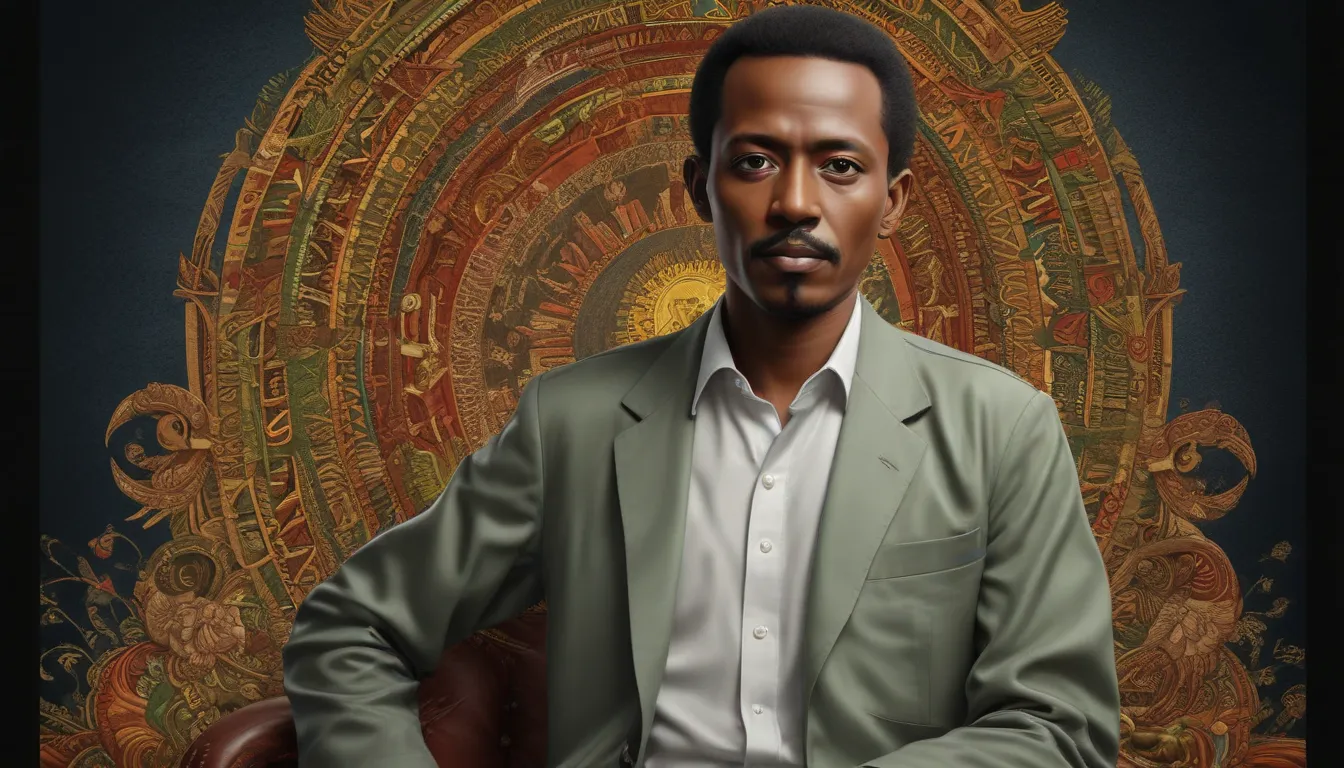The images in our articles may not match the content exactly. They are used to grab your attention, not to show the exact details in the text. The images complement the text but do not replace it.
Ethiopia’s history is synonymous with the name Mengistu Haile Mariam, a figure who left an indelible mark on the nation during his tenure as president from 1977 to 1991. Mengistu’s leadership was marred by a complex mix of praise and criticism, shaping the country’s trajectory amidst turbulent times. In this article, we will delve into nine astonishing facts about Mengistu Haile Mariam, illuminating his journey to power, his policies, and the lasting legacy he imparted on Ethiopia.
Key Takeaways:
- Mengistu Haile Mariam’s rule in Ethiopia was characterized by oppression, violence, and widespread suffering, leaving a lasting impact on the nation’s history.
- Despite the contentious nature of his legacy, Mengistu Haile Mariam’s regime was defined by harsh policies, human rights violations, and a prolonged civil war that reverberated through Ethiopian society.
The Rise to Power
Mengistu Haile Mariam ascended to power in 1974 following the overthrow of Emperor Haile Selassie, marking the inception of a tumultuous era in Ethiopian history.
The Communist Regime
During his reign, Mengistu introduced a stringent communist regime known as the Derg, characterized by extensive human rights abuses, political oppression, and economic mismanagement.
The Red Terror
Under Mengistu’s leadership, Ethiopia bore witness to the atrocities of the “Red Terror,” a period mired in mass imprisonments, torture, and executions of perceived political adversaries. The casualties during this dark chapter range from 500,000 to 2 million lives lost.
The Ethiopian Civil War
Mengistu’s regime faced fierce resistance from various rebel factions, sparking the Ethiopian Civil War that spanned from 1975 to 1991, resulting in substantial destruction and loss of life.
Soviet Union Support
Amid the Cold War landscape, Mengistu aligned with the Soviet Union, garnering substantial military and economic aid that propped up his regime and prolonged the Ethiopian Civil War.
Forced Relocations
Mengistu’s administration enforced a policy of forced relocations, known as villagization, aimed at consolidating the rural populace into communal agricultural settlements. This initiative displaced millions, leading to significant societal and economic upheaval.
Oromo Resistance
The Oromo people, Ethiopia’s largest ethnic group, faced systemic oppression and discrimination under Mengistu’s rule. The emergence of the Oromo Liberation Front as a rebel group sought to advocate for the rights and autonomy of the Oromo community.
Mengistu’s Exile
In 1991, Mengistu was toppled by rebel forces led by the EPRDF, forcing him into exile in Zimbabwe, where he remains to this day. Despite calls for his extradition, he has evaded accountability for his actions.
Controversial Legacy
Mengistu Haile Mariam’s legacy continues to polarize opinions in Ethiopia. While some regard him as a revolutionary figure who stood against imperialism, others condemn him as a brutal dictator responsible for untold suffering and loss of life.
Conclusion
In conclusion, Mengistu Haile Mariam’s enigmatic presence in Ethiopian history as the leader of the Derg regime leaves a complicated legacy. Whether lauded as a hero or reviled as a despot, the astonishing facts about Mengistu shed light on his enduring impact on Ethiopia. From his ascension to power to his period in office and subsequent exile, his actions and policies have undeniably shaped the course of Ethiopian history.
While interpretations of Mengistu’s legacy may diverge, his pivotal role in reshaping Ethiopia’s political landscape cannot be understated. By exploring these facts about Mengistu and his regime, one gains valuable insights into the challenges faced by the Ethiopian populace during that tumultuous era.
FAQs
- Who is Mengistu Haile Mariam?
-
Mengistu Haile Mariam was the leader of the Derg regime, a Marxist military junta that governed Ethiopia from 1974 to 1991.
-
What was the Derg regime?
-
The Derg regime was a military junta that seized power after toppling Emperor Haile Selassie in 1974. It implemented socialist policies and engaged in political repression and human rights violations.
-
What were some of the achievements of Mengistu’s regime?
-
Under Mengistu’s rule, Ethiopia witnessed notable economic advancements, particularly in education and healthcare. The regime also pursued land reforms and modernized agricultural practices.
-
What were some of the controversies surrounding Mengistu’s regime?
-
Mengistu’s regime was marred by egregious human rights abuses, including mass executions, forced disappearances, and torture. His policies also contributed to a devastating famine in the mid-1980s, resulting in significant loss of life.
-
What became of Mengistu Haile Mariam post-regime?
- Following the collapse of the Derg regime in 1991, Mengistu sought refuge in Zimbabwe, where he was granted asylum. In 2006, he was convicted in absentia for crimes against humanity by an Ethiopian court.
Unravel the enduring legacy of Mengistu Haile Mariam, whose presence reverberates through Ethiopia to this day. Explore more captivating insights into communism, delve into the mysteries of Lough Derg, or immerse in the historic exile saga on St Helena Island.
Was this page helpful?
Our dedication to delivering credible and captivating content drives our mission. Every fact shared on our platform is contributed by users like you, ensuring a diverse tapestry of insights and knowledge. Rigorous editorial scrutiny underpins our commitment to accuracy and authenticity, guaranteeing that the information we provide is not only intriguing but also reliable. Trust in our pursuit of quality and truth as you embark on a journey of exploration and discovery.






